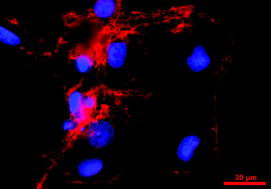We explore textural cues as a mechanism for controlling neuronal process outgrowth in primary cultures of mammalian neurons. The work uses a form of decal transfer lithography to generate arrays of PDMS posts of various dimensions and spacings on glass substrates that are rendered growth-compliant by subsequent treatment with a protein activator. Hippocampal neurons plated on these substrates are used to determine how the posts direct process growth by acting as attachment points or guidance cues. Textural features varying over a large range, even as large as 100 µm in diameter, dramatically affect process growth. Indeed, two growth regimes are observed; at the smaller feature sizes considered, process branching strongly aligns (at right angles) along the post mesh, while neuronal outgrowth on the larger feature sizes elicits process wrapping. The latter behavior most strongly manifests in neurons plated initially at ∼100 cells/mm2, where the cells were able to form networks, while for isolated neurons, the cells exhibit poorer viability and development. Bag cell neurons from Aplysia californica also display regular growth patterns, but in this case are guided by contact avoidance of the posts, a behavior qualitatively different than that of the hippocampal neurons.

You have access to this article
 Please wait while we load your content...
Something went wrong. Try again?
Please wait while we load your content...
Something went wrong. Try again?


 Please wait while we load your content...
Please wait while we load your content...